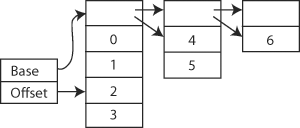Please tell us which country and city you'd like to see the weather in.

Vlist
Vlist (![]() pronunciation ) is a village and former municipality in the western Netherlands, in the province of South Holland. Since 2015 it has been a part of the municipality of Krimpenerwaard.
pronunciation ) is a village and former municipality in the western Netherlands, in the province of South Holland. Since 2015 it has been a part of the municipality of Krimpenerwaard.
The municipality covered an area of 56.51 km2 (21.82 sq mi) of which 2.80 km2 (1.08 sq mi) was water. It had a population of 9,750 in 2014.
On 1 January 1985, the municipalities of Haastrecht, Stolwijk, and Vlist were merged and the new municipality was named after the little river Vlist.
The former municipality of Vlist included the population centres of Haastrecht, Stolwijk, and Vlist.
The Vlist is a river in South Holland which runs from Schoonhoven to Haastrecht where it empties into the Hollandsche IJssel. It passes Schoonhoven, Bonrepas, Vlist and Haastrecht. The river stretches as the crow flies about 10 kilometres (6 miles). The Vlist is a bog river and was formerly used as a basin for polders around the river; there were a lot of windmills on the banks of the river for pumping water. Previously, the Vlist was used for the transport of goods, particularly from Schoonhoven to Utrecht. Today the river has a tourist function. In particular cyclists and pedestrians use the area for their tours. In the summer the roads beside the Vlist are filled with cyclists and hikers. The river itself is often navigated with canoes which can be hired in Haastrecht. In the winter when the river is frozen, the Two Provinces trip is organized for the ice-skate enthusiasts. Famously, along this river (at Bonrepas) Wilhelmina of Prussia, wife of William V, was stopped on June 28, 1787 by patriots from Gouda and then brought to a farm on the Goejanverwelle Lock.

VList
In computer science, the VList is a persistent data structure designed by Phil Bagwell in 2002 that combines the fast indexing of arrays with the easy extension of cons-based (or singly linked) linked lists.
Like arrays, VLists have constant-time lookup on average and are highly compact, requiring only O(log n) storage for pointers, allowing them to take advantage of locality of reference. Like singly linked or cons-based lists, they are persistent, and elements can be added to or removed from the front in constant time. Length can also be found in O(log n) time.
Operations
The primary operations of a VList are:
Advantages and Disadvantages
The primary advantage VLists have over arrays is that different updated versions of the VList automatically share structure. Because VLists are immutable, they are most useful in functional programming languages, where their efficiency allows a purely functional implementation of data structures traditionally thought to require mutable arrays, such as hash tables.

